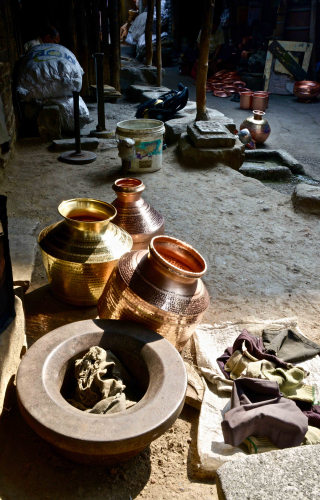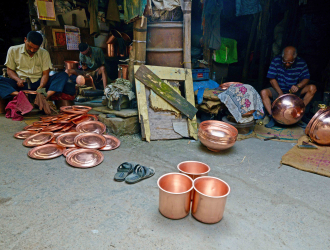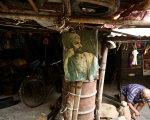'Things create people as much as people make them.' (Tilley 1999:76)
Anthropologist Alfred Gell (1998) in his famous essay on art and agency states that people think the world through objects, and that objects, like human subjects have agency. Over the last few years, anthropological theory has conversed at length about the materiality of objects, the agency of networks they create, the dynamics between materials and materiality (Ingold 2007) and how objects may carry with them their own biographies (Kopytoff 1986).
In short, objects create cultures, create objects. Artifacts belonging to pasts of diverse cultures are often carefully curated in museums and preservation spaces as agents ensuring continued conversation with antecedent knowledge systems. But what happens, for instance, when intangible artefacts that are alive express themselves and their identities through the objects they continue to create? How does one navigate or converse with living, breathing, sonorous culture, on the verge of demise?
These were some questions that came up as I explored the Tambat Ali in Kasba Peth, Pune, Maharashtra, a community of coppersmiths that have held together their professional practice for over 300 years. The artistry and tradition of professionally making copper vessels using unique skills and design techniques has been passed down from one generation of the Tvastha Kasar community to the next in the city of Pune since the Peshwa period of 1713-1857.
Tamba, in Marathi means copper, and hence loosely a Tambat is a coppersmith. As the Maratha Empire continued to expand, the Peshwas, with a vision of creating an administrative headquarters in Pune, asked traders and craftsmen of various communities and regions to come together to settle in Kasba Peth so as to support the everyday functioning of a potential capital city. The coppersmiths of Tambat Ali hold in themselves great pride of having served an empire. But at the same time, they silently grieve the slow death of their craft and lineage.
Of over 300 practising coppersmiths that existed in the late 1960s, only 28 households remain to this day. The decline in these numbers is due to rising copper prices, a drop in utility of copper vessels, very little financial reward for a lot of physical hard work and a reluctance of the next generation of tambats to take the craft on. The custodians of the community, its elders as well as elected leaders of the Tvastha Kasar Samaj affirm, with hopelessness and heartache in their eyes, that this may be the last generation of the practising Tambat craftsman.
References
Gell, Alfred. 1998. Art and Agency: An anthropological Theory. Oxford University Press.
Ingold, Tim. 2007. ‘Materials against materiality’. Archeological Dialogues 14(1): 1-16.
Kopytoff, Igor. 1986. ‘The Cultural Biography of things: Commoditization as a process’. In Social life of things: Commodities in cultural perspective, edited by Arjun Appadurai, 64-91. Cambridge: Cambridge University Press.
Tilley, Christopher. 1997. A phenomenology of Landscapes: Places, Paths and Monuments. Oxford: Berg publications.
Further readings
Mauss, Marcel. ‘Techniques of the body’. Economy and Society 2, no. 1 (1973): 70-88.
Boradkar, Prasad. ‘Agency and counter agency of materials: A story of copper’. In Encountering things: Design and Theory of things, edited by Leslie Atzmon and Prasad Boradkar, 191-201. Bloomsbury Publishing, 2017.















